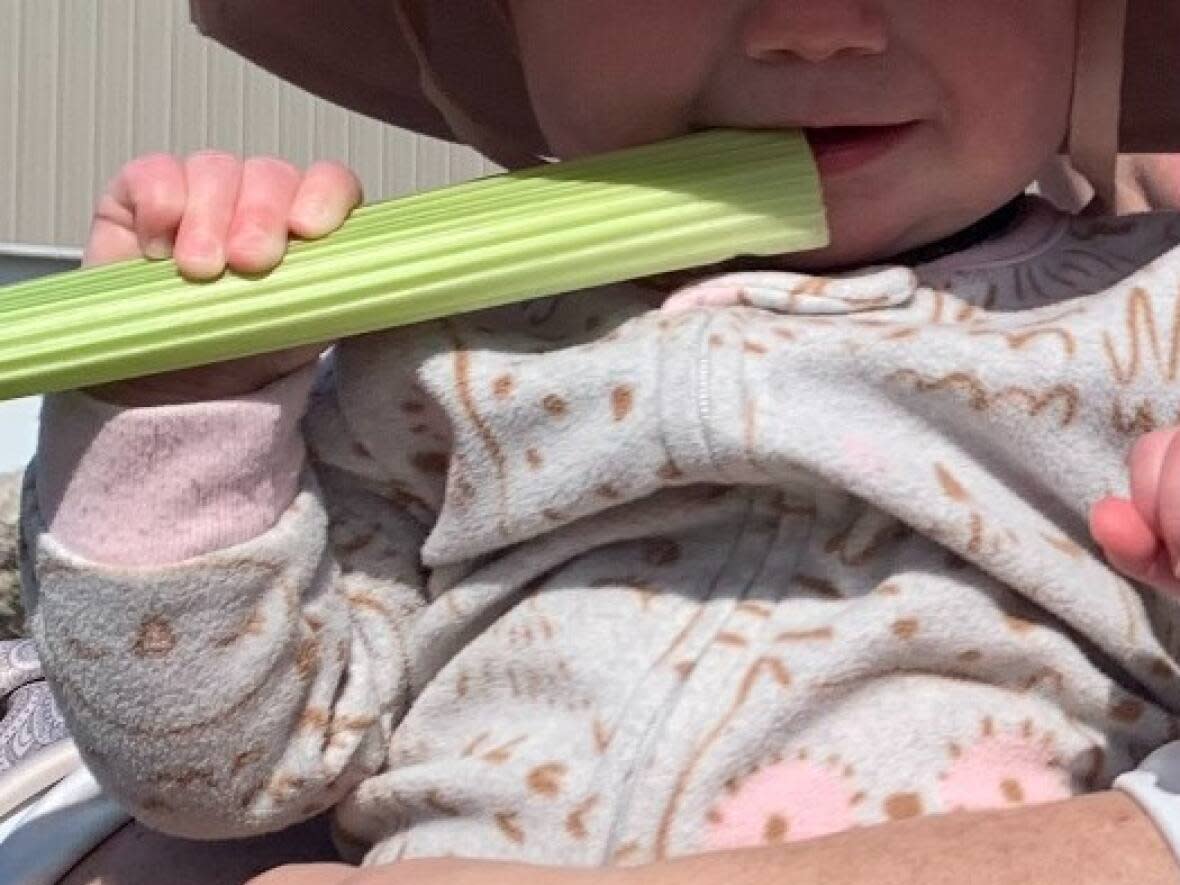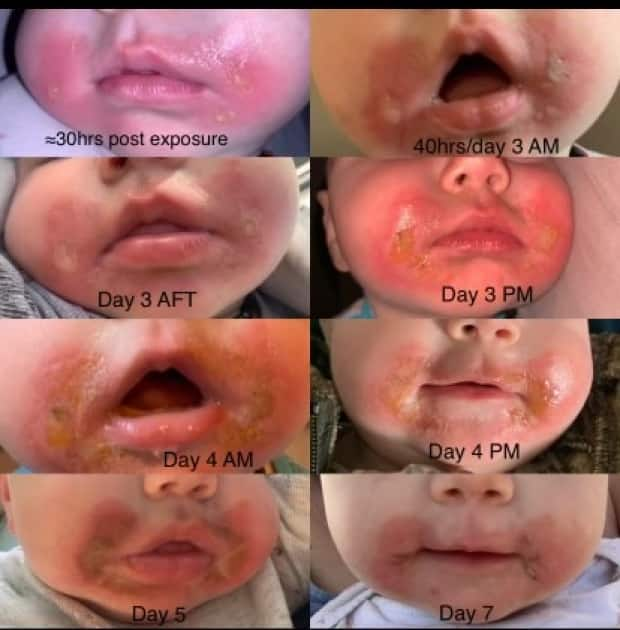Mom warns about risks of eating certain foods in sunlight after her baby got 'margarita burns' from celery

WARNING: This story contains graphic images of a skin disorder.
Reanna Bendzak thought giving her teething seven-month-old daughter a celery stalk would be a simple and safe way to offer her some relief as they enjoyed the sun earlier this spring.
She never expected it would result in burns and blisters around her baby's mouth, the result of compounds found in certain foods coming into contact with sunlight.
Bendzak, from Kamloops, B.C., recently shared pictures on social media of rashes and burns on her baby's face that appeared after the infant chewed on the celery stalk in mid-March.
"She held it for five to ten minutes [and] we were outside for the rest of the afternoon, and the next morning we woke up, she had a bit of a teething rash around her mouth … later that day, it developed blisters," Bendzak told host Shelley Joyce on CBC's Daybreak Kamloops.
"It was second-degree burns all around her mouth — it had intense swelling, as well, which, of course, makes it difficult [for her] to eat or nurse."

She later discovered that her child had suffered from phytophotodermatitis, commonly referred to as "margarita burns." This condition occurs when the skin comes into contact with the sap or juice of plants including carrots, celery and limes and is then exposed to sunlight.
Foods that can cause burns
According to the College of Family Physicians of Canada (CFPC), plants that cause phytophotodermatitis contain furanocoumarins, a compound that reacts with UVA ultraviolet rays and triggers an intense skin reaction.
The college says other plants capable of causing margarita burns include peppers, dill, figs, mustard, parsley and parsnips.
It says these burns are not allergic reactions and typically become visible 48 hours after exposure to UVA rays.
After her child developed phytophotodermatitis, Bendzak and her husband decided to experiment by applying celery juice to their arms and exposing them to sunlight for 25 minutes. They developed rashes within 30 hours.
While her daughter is healing well, she still has hyperpigmentation and scarring that require treatment.

Vancouver pediatric dermatologist Dr. Joseph Lam says people don't have to worry too much about the hyperpigmentation.
"If you are unfortunate enough to have this reaction, the pigmentation left on the skin can last for weeks and weeks, but it will go away," he said.
But dermatologists are reminding people to avoid touching foods containing furanocoumarins when in direct sunlight to prevent margarita burns — so called because limes are an ingredient of the cocktail.
Some people have shared on social media how they developed a rash around their mouth after enjoying a cocktail.
Bendzak hopes her social media post will raise awareness of margarita burns during the summer, particularly among their friends who work as bartenders and make beverages with lime juice.
"It's not just kids that are impacted, but anyone," she said.
The CFPC recommends promptly cleaning the skin with water after exposure to furanocoumarins and UVA rays.
The organization suggests using sunscreens to prevent margarita burns, but warns that not all sunscreens are effective as some only protect against UVB ultraviolet rays.


